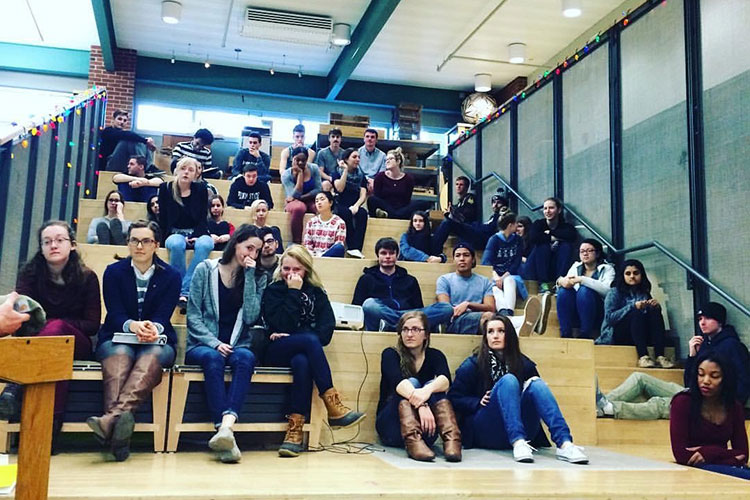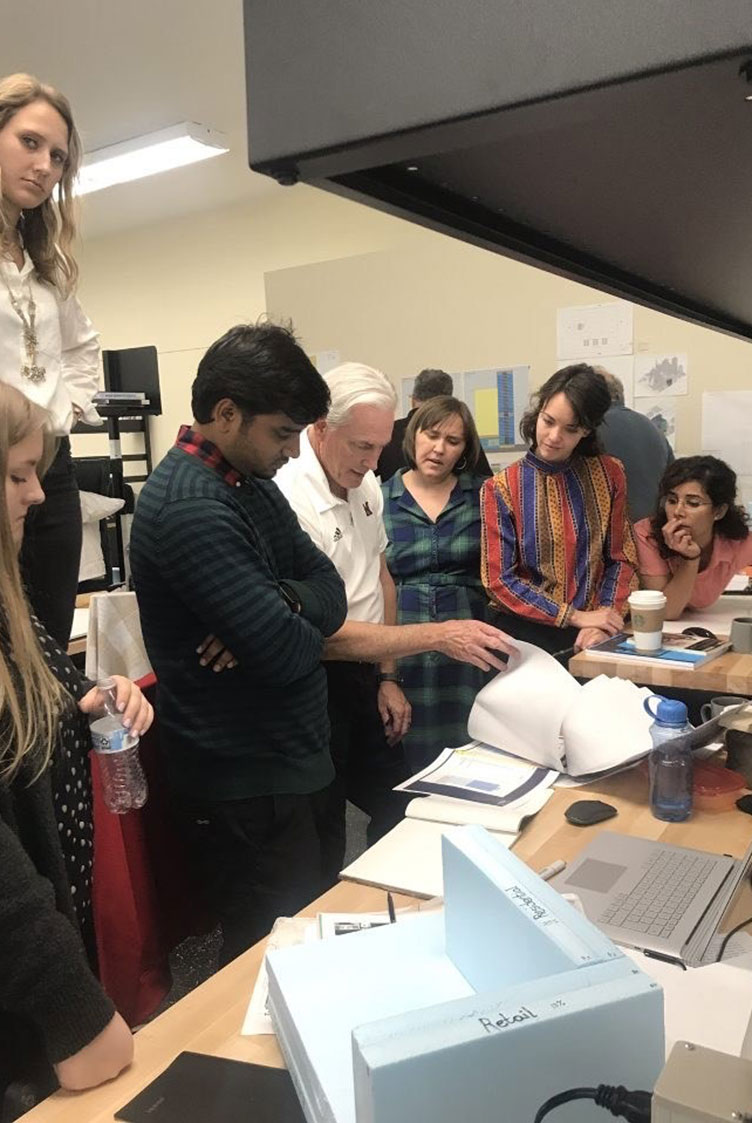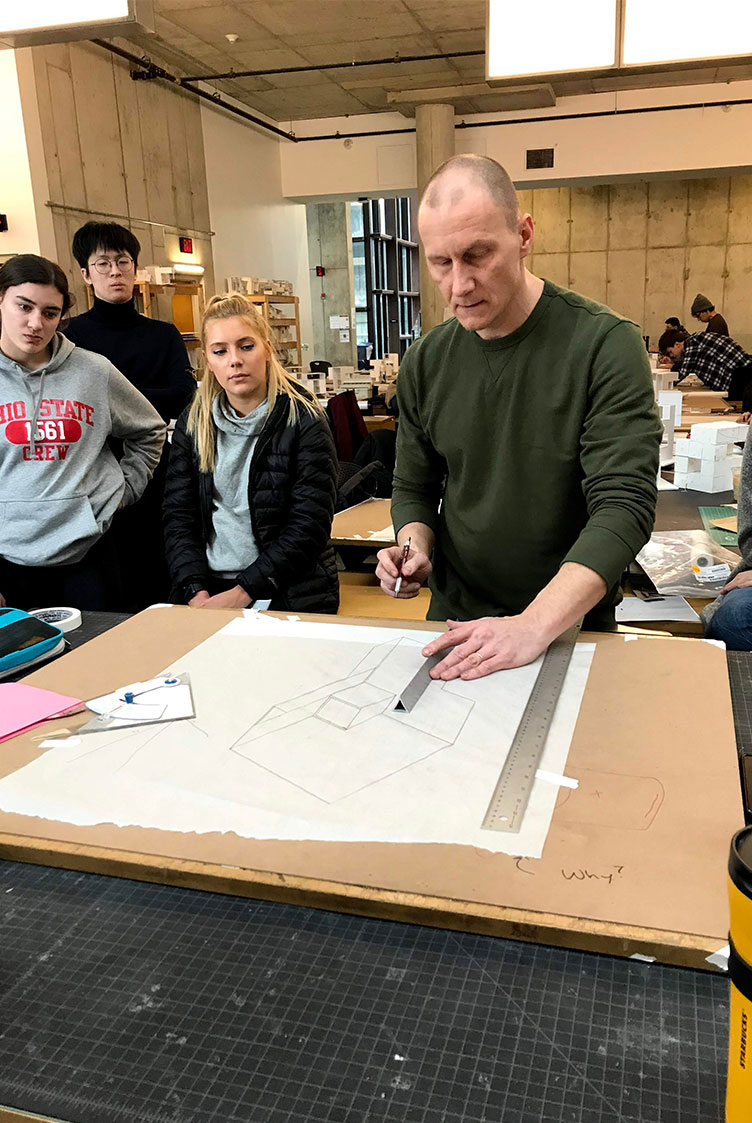Architecture school is all about collaboration and studio culture. What happens when you take all that away? In this Q and A, DesignGroup's newest employees explain the pros and cons of their recent semester — and their ideas for the future.
There’s no denying it: Architecture education is a grind. Long hours in the studio, collaboration with stressed peers, constant feedback from professors – it’s a lot to manage. Now, imagine doing all that in isolation, without the support of classmates. Yikes.
But that’s what DesignGroup’s recent hires and summer interns faced this spring. Yes, they admitted, it wasn’t ideal. But they also found silver linings. We talked to four of them about how they kept focused under very difficult circumstances – and what educators might take away from their experiences.
Our interviews included intern Marissa Andrews, a current architecture graduate student at Miami University; Kristina Bertocchi, a recent architecture graduate from The Ohio State University; and Alex Keiser and Emily Wagner, recent architecture graduates from Penn State.
What was the hardest aspect of quarantine, school-wise?
Kristina Bertocchi (KB): I was a teaching assistant and taking classes of my own, so I saw both sides of it. The hardest part was getting the virtual meeting technology to the students – we weren’t even sure they all had internet access. Two years ago, OSU started giving iPads to all incoming freshmen, so that helped a lot. But there is very little control beyond that. It was hard to grade based on whether a student has access to privileges like the internet. That was the biggest challenge in terms of teaching. From the student perspective, four-hour [online] lectures can be pretty boring and zoom fatigue is a real thing. Sitting in a room by yourself for four hours...it was very hard to keep your attention focused.
Emily Wagner (EW): An initial struggle was creating a schedule that worked for living at home. I haven’t gone lived at home during school in five years! Meeting obligations of helping around the house, managing the timeline of my classes, and getting schoolwork done, was definitely an adjustment. I was in a group project where all seven people had the same issue. It was hard to find time when we all could log in to collaborate.
Alex Keiser (AK): For me, it was the abrupt transition. We went home for a week for spring break and realized it would be an indefinite thing. As a senior it probably wasn’t as impactful, but for my friends who are 3rd and 4th years and are looking at continuing online in the fall...I think they’re a little frightened, and aren’t reassured that things will get back to normal in a relatively short time frame.

What do you miss most about the on-campus experience?
KB: The perspective of fellow students. In Zoom classrooms you get the perspective of the instructor but you really don’t get that student-to-student interaction. Everyone has their screen on mute. We definitely missed out on some fun discussions.
EW: I missed the social aspects. The studio culture is what allowed me to be successful as a student. My friends supported me when I had a question or just needed a break or to vent. We would leave the building and walk down to the Dining Commons and get a bunch of junk food, and take as long as possible to walk that short distance back. Even just hanging outside for a few minutes. That was our break from the stress of architecture.

What's the best aspect of quarantine, school-wise?
EW: It’s been nice that my mom brings me dinner.
Marissa Andrews (MA): I’ve enjoyed being home. I like being in Columbus because there’s more to do even with the social distancing. We go to a lot of parks and stuff on the weekends just to go walking or hiking.
EW: I also found that when [my classmates] met as a group, the group seemed a lot more focused on the Zoom call than when we met in person, because people couldn’t have side conversations. It had to be a conversation that all seven people were actively engaged in and people didn't miss things that were related to them. I think it helped me think about verbal communication, because I couldn't just point to what I was talking about on the drawing I had to verbally describe where I was looking on the plan. That became apparent on the very first day.
KB: Instructors had to be more organized. You can’t come into a classroom not knowing what you are doing, or you will just all stare at each other. Things like having very specific outlined instructions for what’s due. I definitely saw an increase in organization, which I liked a lot.
AK: This might sound a little nerdy, but I’ve had a more time to focus on my schoolwork. I’ve also been heading up our Digital Beehive software group at Penn State, which is a peer-to-peer learning group within the school of architecture. The switch to online learning facilitated the group to create a lot more virtual content. So we’ve been expanding our library of videos and helping students more comfortably use Zoom and screen share and work remotely.

What positives could be adopted from this distance-learning experience?
MA: This semester I started my art thesis, and I’ve liked doing everything through Google Docs. My professor can go directly into my doc and make comments, rather than me sending her a file and her sending it back. It’s a lot more convenient and I get better responses.
KB: Zoom fatigue forced instructors to understand what can be cut and how to make relaying information exciting. That’s something I want to incorporate if I ever teach again.
EW: I can see this being successful for nontraditional students who don’t have Monday through Friday open for classes. Using the techniques learned from this and applying them to those students, and international students, could be really great. And simply making more online classes available — not necessarily mandating that everything is online. If students found that online learning worked well, in some cases, promoting that in more classes could be beneficial moving forward.
AK: People who’ve gone through this, professionally as well as students, will have a good basis for flexible or distanced communication. I think it will be valuable. And seeing businesses allowing people to work from home one or two days a week has resulted good things, like lower car emissions and other environmental benefits. It might also help with work/life balance – fewer hours spent commuting.







